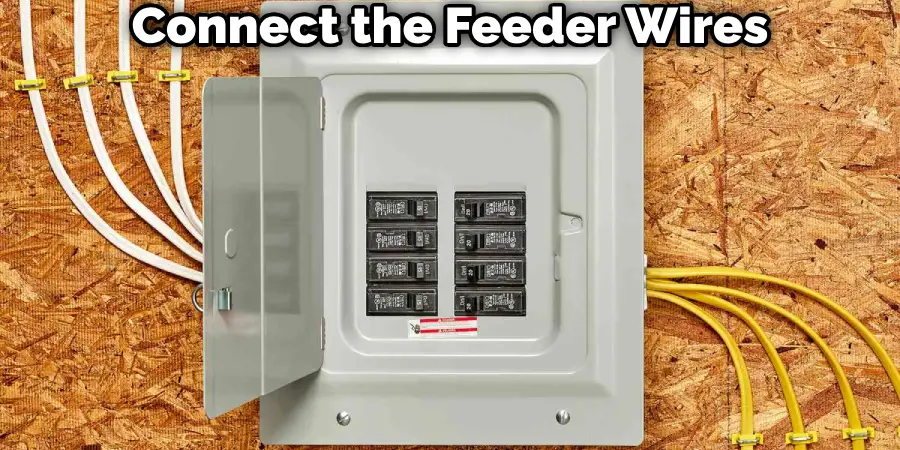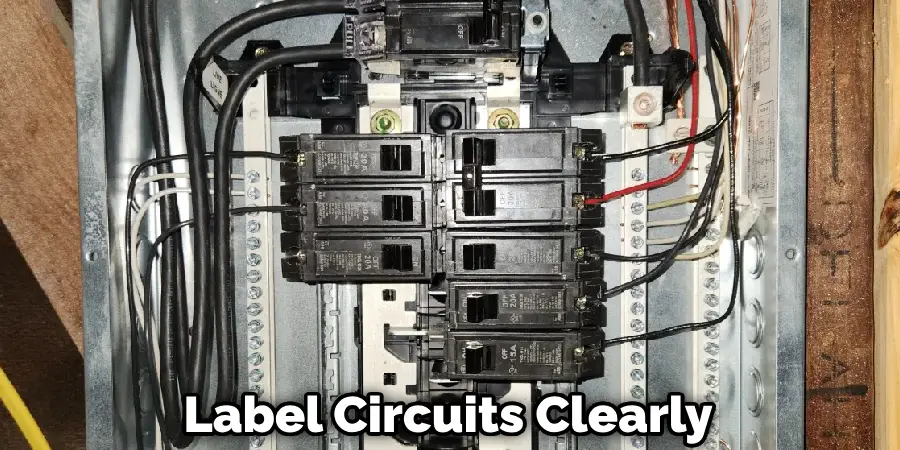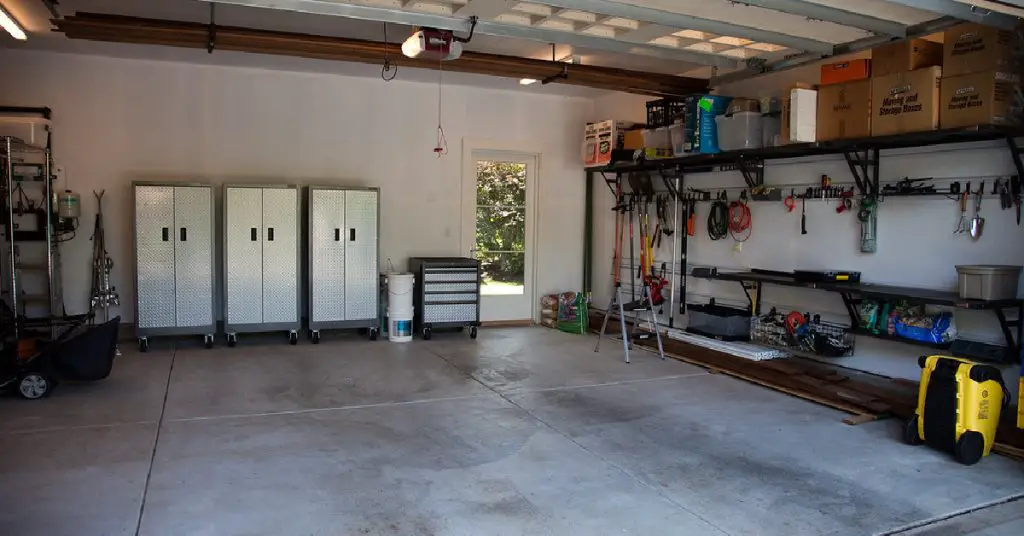Are you tired of extension cords running everywhere in your garage? Upgrading to a subpanel can provide dedicated power and make your garage a more functional and efficient space. In this comprehensive guide, we’ll walk you through the process step-by-step, ensuring you have all the information you need for how to add subpanel in garage like a pro.

Key Takeaways:
- Dedicated subpanel expands electrical capacity and avoids overloads
- Carefully plan layout, size, and permits for code compliance
- Consider hiring a professional electrician for complex installations
- Future-proof your garage for electric vehicles and increasing power needs
Why You Need a Subpanel for Your Garage
While it may be tempting to simply run a few extra circuits from your home’s main electrical panel to your garage, there are several compelling reasons why a dedicated subpanel is a better solution:
- Expanded Electrical Capacity: A subpanel allows you to add as many circuits as you need to power all your tools, equipment, appliances, and even an electric vehicle charger without worrying about overloading your main panel.
- Avoiding Overloads and Tripped Breakers: By separating your garage’s electrical load from your home’s main panel, you reduce the risk of overloading circuits and constantly dealing with tripped breakers.
- Isolating Garage Circuits: Having a subpanel dedicated to your garage makes it easier to isolate and troubleshoot any electrical issues specific to that area, without affecting the rest of your home’s electrical system.
- Meeting Code Requirements: In many areas, building codes require a separate subpanel or disconnect switch for detached structures like garages, rather than tapping directly into the main panel.
- Future-Proofing and Increased Home Value: With the growing popularity of electric vehicles and the ever-increasing demand for power in our modern lives, a subpanel gives you the flexibility to accommodate future electrical needs, which can be a significant selling point for potential homebuyers.
Planning Your Subpanel Installation
Before installing a subpanel, it’s crucial to plan carefully:
- Determining Your Electrical Needs: Calculate your electrical load and anticipate future loads to choose the right subpanel size and amperage.
- Choosing the Proper Subpanel Size: Select a subpanel that can handle your electrical needs, considering factors like the number of circuits, amperage, and voltage.
- Deciding on the Ideal Subpanel Location: Ensure the subpanel is installed in a secure, accessible location with sufficient clearance space.
- Assessing Upstream Electrical Service: Evaluate your upstream electrical service and consider upgrading if necessary to support your subpanel installation.
- Factoring Cost Estimates: Budget accordingly, considering the cost of materials, labor, and potential upgrades.

Preparing for the Installation
Before starting the installation, ensure you have the necessary permits and materials:
- Acquiring Necessary Permits: Obtain permits from local authorities to ensure compliance with local regulations.
- Gathering Required Materials: Collect the necessary materials, including a subpanel, feeder cable, conduit, ground rods, breakers, and more.
- Pro Tip: Opt for a slightly larger subpanel than you think you need for future expansion.
7 Accurate Steps for How to Add Subpanel in Garage
The installation process involves several key steps for how to add subpanel in garage:
Step 1: Running the Feeder Cable
Install the feeder cable from the main panel, ensuring proper wire sizing and conduit installation.
Step 2: Grounding Requirements
Install ground rods, bond the neutral-ground, and isolate the neutral-ground for safety and code compliance.
Step 3: Mounting the Subpanel Enclosure
Securely mount the subpanel enclosure to ensure a safe and accessible installation.
Step 4: Connecting Feeder Wires and Grounding System
Connect the feeder wires and grounding system to the subpanel, ensuring proper connections and safety.

Step 5: Installing Branch Circuit Breakers
Install branch circuit breakers to provide dedicated power to your garage circuits.
Step 6: Wiring Branch Circuits
Wire branch circuits for outlets, lights, equipment, and more, ensuring proper connections and safety.
Step 7: Testing, Inspecting, and Commissioning
Test and inspect the new subpanel to ensure it’s functioning correctly and safely.
You Can Check It Out to Run Overhead Electrical Wire to Garage.
Key Considerations
When installing a subpanel, it’s essential to consider the following key factors:
- Adherence to Electrical Code Requirements: Ensure compliance with electrical code requirements, including local codes and NEC references.
- Performing Proper Load Calculations: Calculate your electrical load accurately to prevent overloading and ensure a safe installation.
- Techniques for Neat and Organized Wiring: Use techniques for neat and organized wiring and cable management to ensure a professional installation.
- Labeling Circuits Clearly: Label circuits clearly for future maintenance and troubleshooting.
- Planning for Future Electrical Expansion: Plan for future electrical expansion and EV charging to ensure your subpanel installation is future-proof.

Hiring a Professional Electrician
In some cases, it’s best to hire a professional electrician for the installation:
- When it Makes Sense to Hire a Pro: Consider hiring a pro if you’re not comfortable with electrical work or if the installation is complex.
- Vetting and Hiring a Qualified Electrician: Research and hire a qualified, licensed electrician to ensure a safe and professional installation.
- Typical Costs for Professional Installation: Expect to pay a premium for professional installation, but ensure a safe and compliant installation.
- Peace of Mind: Hiring a professional electrician provides peace of mind, knowing your subpanel installation is done correctly and safely.
FAQs About How to Add Subpanel in Garage
Can I Install a Subpanel Myself?
Installing a subpanel yourself is possible if you have a solid understanding of electrical systems, access to the necessary tools, and are aware of local codes and safety practices. However, this task carries significant risks, including electrocution and potential fire hazards if done incorrectly. You’ll need to obtain the proper permits and might have to pass an inspection upon completion. Given the complexities and dangers involved, unless you’re very experienced with electrical work, considering professional installation is strongly recommended to ensure safety and compliance.
Do I Need a Subpanel in My Garage?
Whether you need a subpanel in your garage largely depends on the electrical requirements of the space and its physical connection to your main property. For attached garages, a subpanel may be necessary if you’re planning to operate heavy machinery or install an electric vehicle charger that demands significant power beyond basic lighting and outlets. In the case of detached garages, the National Electrical Code often mandates a subpanel for safety and compliance, especially when accommodating high-demand equipment. Factors such as the total electrical load, distance from the main panel, and adherence to local codes, including the necessity for a disconnecting means and potentially a ground rod, play crucial roles in determining the need for a subpanel. It’s always advisable to consult with a licensed electrician to ensure your setup meets all safety standards and code requirements.
Does a Subpanel Need a Main Breaker?
A subpanel does not always require a main breaker as per the National Electrical Code (NEC), but the need for one depends on factors like the subpanel’s location relative to the main panel, local code requirements, and safety considerations. While the NEC doesn’t mandate a main breaker for subpanels within the same building, local codes may differ, and installing a main breaker can offer convenient load management and enhanced safety by providing an easy way to disconnect power. It’s advisable to consult local building codes and an electrical inspector to ensure compliance and safety in your specific installation scenario.
Conclusion
In conclusion, adding a subpanel to your garage is a smart move that can open up a world of possibilities. By following this comprehensive guide, you’ll be well-equipped to handle the installation and ensure a safe, efficient, and compliant electrical system. Just remember to always prioritize safety, and don’t hesitate to call in reinforcements if you need them. Happy wiring!


